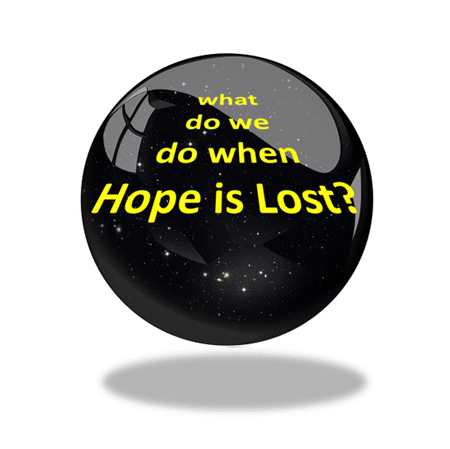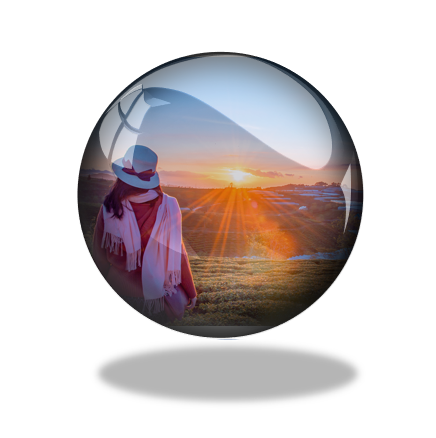How do adventurous visions provide a source of hope – engaging your people in a cause bigger than themselves?
– – – – – – – – – – – – – – – – – –
Hope is the most powerful force in existence. It turns losers into winners. It helps defeat impossible odds. Hope keeps people going when they would otherwise give up. It inspires incredible acts of bravery. Hope ignites creativity. And it transforms businesses.
What do we do when Hope is Lost?
 But when we see a world around us which is struggling. And we see evil go unchecked and unpunished. The things we value are being lost. And it all seems to be heading in the wrong direction. What then happens to our hope?
But when we see a world around us which is struggling. And we see evil go unchecked and unpunished. The things we value are being lost. And it all seems to be heading in the wrong direction. What then happens to our hope?Typically, it retrenches. We still have hope, but within boundaries. And unfortunately those boundaries are shrinking.
The danger is that we have a misunderstanding of hope. That we see it is a consequence, rather than a cause. That we hold onto it as a comfort, not as something that drives us to bravely, creatively and triumphantly fight back. Perhaps we are consumers of hope, rather than its creators?
Creators of Hope
The thing is, someone has to create hope. If all everybody is doing is either holding on to it, or stealing it away from others, how will it grow? True, most of us are not in a position to create hope for the whole world. But we can create hope where we are.
 And for those of us that lead or influence organisations, we have to ask ourselves, what are we doing to increase hope? Where are our people placing their hope? And what is the role of our organisation in inspiring and channeling that hope? How do we and our organisation become creators of hope?
And for those of us that lead or influence organisations, we have to ask ourselves, what are we doing to increase hope? Where are our people placing their hope? And what is the role of our organisation in inspiring and channeling that hope? How do we and our organisation become creators of hope?Hope in Community
Religious groups have long understood the fact that hope is sustained better in community. But, like many communities, they sometimes lose sight of the need to ensure that the outworking of their hope is worthy of that community. That its ambition and adventure brings hope to those around it, and brings growth to the individuals within it.
The same is true for all organisations. If their sense of ambition and adventure is insufficiently large, they will fail to develop and harness the true potential of their people. And they will fail to realise their own potential to impact the world around them. They will function, they may even survive, but they are unlikely to really inspire.
Adventurous Visions
 What is needed is what we call adventurous vision. A creative expansion of the perspective of the organisation and the people within it. A shared picture of a future that matters, and which creates meaning for all involved in it. Something that makes a real difference for the people within the organisation, and the people they interact with outside of it. A pursuit that offers them a sense of pride in the difference they will make – what they truly, confidently, HOPE to achieve.
What is needed is what we call adventurous vision. A creative expansion of the perspective of the organisation and the people within it. A shared picture of a future that matters, and which creates meaning for all involved in it. Something that makes a real difference for the people within the organisation, and the people they interact with outside of it. A pursuit that offers them a sense of pride in the difference they will make – what they truly, confidently, HOPE to achieve.Un-Adventurous Visions
Very few people get inspired by the requirement for incremental steps in their performance. 10% here and there is for many simply an invitation to work harder and longer. Normally for somebody else’s benefit, usually for someone who already has more money than they do. Numbers and increments do not inspire – well not unless they really mean something that is. It is the implications of the numbers that matter – the difference they make in the world.
But if it is the implications that matter. If it is the narrative around the numbers that is the real source of hope. Then wouldn’t it be better to cast the vision in those terms?
Creating Adventurous Visions
 The two most important things in creating adventurous visions are conversation, and asking the questions ‘Why?’ and ‘What if …?’.
The two most important things in creating adventurous visions are conversation, and asking the questions ‘Why?’ and ‘What if …?’.Conversations can help people to understand what is important to ourselves and each other. As a result, they begin to reconcile a narrative around meaning and potential. And they begin to generate deeper and more meaningful relationships.
Key to this is the question ‘Why?’. Understanding the reasons why people do what they do, and think as they think, can build new links between people’s stories. Successive levels of ‘Why?’ can open up new insights, and creative opportunities for doing things differently. Thinking about these opportunities together can generate new sense of hope and optimism. And it can bond people together, and to the organisation, in pursuit of this.
Inspiring Creativity
Asking ‘What if …?’ helps to break down some of the habits and paradigms that hold our perception of the work we do in the routine and mundane. It opens up further possibilities and fires people’s imaginations.
At the organisation level, it can to some extent recast the organisation’s role. It can help the leadership see further than the product or service into the potential impact this is having on their customers, and even their customers’ customers. And the impact it has on society, on the environment, on humanity, and potentially on history.
Dreaming Big
 History? Really?
History? Really?Most certainly. The people who change history are no different from you and I, except in one thing. In some way, they have the belief, the hope, that they CAN change history. The people who don’t change history are no different from you and I except, perhaps, in one thing. They think that changing history is the role of others.
But who are these others? What if we all think it is the role of others? Who then will shine as a light in the darkness?
At some level, and in some way, your organisation could be the next really big thing. But you and your people have to see it, and believe it, and make that their hope. Then again, is that not the role of a leader?
Dreaming Small
Much of this article has been aimed at organisations. But organisations are simply patterns of collections of people. And it often takes just one of those people to make the change.
If you have felt motivated in some way by what is written here, you might be the one that makes the difference to your organisation, that makes a difference to the world. Of course, your organisation might not move. Or even if it did move, you still don’t believe in what it is doing. If that is the case, them maybe your first move is to move to an organisation that you can believe in.
On the other hand, if it might move, you might find some further help in the articles below.
Related Articles
Author: Mike Clargo | Culturistics
About Culturistics: Empowering full strategy engagement through: adventurous visions; deployment frameworks; culture management; facilitative leadership; inspirational meetings; insight landscaping; & powerful partnerships


